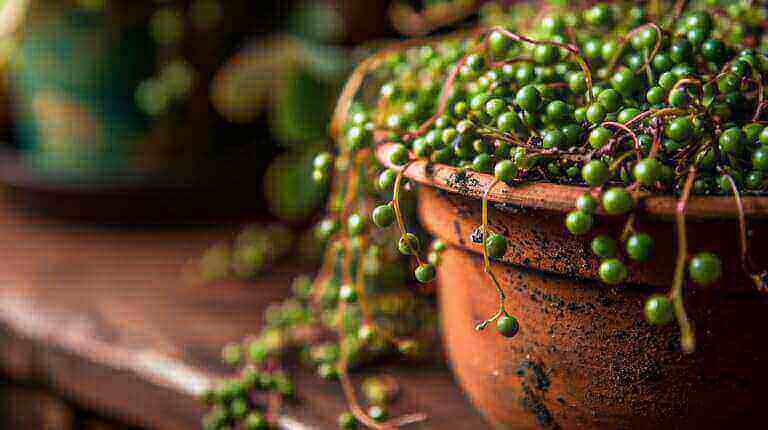As a proud owner of a parlor palm (Chamaedorea elegans), I know firsthand the importance of regular seasonal pruning for maintaining its stunning appearance and promoting plant health. Pruning parlor palm fronds isn’t about sticking to a strict schedule, but attentively observing your plant’s condition and removing yellowed or browned fronds to improve your indoor plant care skills. By following this comprehensive pruning guide, you’ll ensure your parlor palm remains a beautiful feature of your living space while keeping it healthy and thriving.
Key Takeaways
- Pruning parlor palm fronds is essential for maintaining an attractive appearance and supporting overall plant health.
- Observation is key to determine when your parlor palm needs pruning, as it does not require a strict pruning schedule.
- The optimal parlor palm care routine includes proper seasonal pruning and basic maintenance steps, such as watering and fertilizing.
- Know how to properly prune your parlor palm, with sharp and sterile pruning tools, to avoid causing damage to the plant.
- Regularly pruning your parlor palm not only contributes to its health but also keeps it looking aesthetically appealing in your home.
Understanding the Pruning Needs of Your Parlor Palm
Parlor palm care involves regular observation of the plant’s condition to identify when pruning is necessary. Instead of following a strict pruning schedule, focus on recognizing the tell-tale signs that it’s time to give your parlor palm a trim.
Identifying When Your Parlor Palm Needs Pruning
It is essential to know when to prune your parlor palm. Typically, the need for pruning arises when the fronds begin to yellow or brown, indicating aging or suboptimal conditions. Once you notice discoloration or damage on the fronds, it may be the right time to prune. Keep a close eye on your parlor palm’s natural life cycle progressions as they will signal the pruning requirement.
Spotting Signs of Overgrowth and Common Issues
Signs of parlor palm overgrowth include cramped pot conditions and fronds encroaching on nearby space. Overgrowth can harbor common parlor palm issues such as root rot and pest infestations, conditions that signal the need for pruning and potential repotting. Recognizable parlor palm pruning signs include:
- Too dense fronds
- Uneven growth patterns
- Top-heavy plants
Addressing these houseplant care issues promptly will keep your parlor palm healthy and thriving.
The Benefits of Pruning for Plant Health and Aesthetics
Regular pruning promotes healthier, more resilient parlor palms. Here are some of the key benefits of pruning your parlor palm:
- Removing dead or dying foliage, encouraging new growth and maintaining an even, desirable shape within your living space.
- Reducing pest problems associated with overgrown fronds and unhealthy foliage.
- Improving airflow around the plant, which helps prevent diseases such as mold and mildew.
- Aesthetic pruning enhances the parlor palm’s appearance and supports a balanced, lush canopy.
By paying attention to the parlor palm fronds health and keeping an eye on the plant’s growth, you can ensure vibrant, long-lasting beauty in your indoor space.
How to Safely Prune Parlor Palm Fronds
Pruning parlor palm fronds is a crucial aspect of maintaining your indoor plant’s health and aesthetic appeal. Here are the primary steps to safely pruning parlor palm using the Chamaedorea elegans pruning technique:
- Choose the right tools: Use sharp and sterilized pruning shears or scissors to make clean and precise cuts. Dull or dirty tools may cause damage, resulting in stress to the plant.
- Identify the fronds to be pruned: Examine the parlor palm and look for fronds that are yellowing, browning, or damaged. You should only remove these unhealthy fronds, leaving the healthy and green ones intact to sustain the plant’s wellbeing.
- Properly dispose of the fronds: After cutting off the afflicted fronds, gather them safely and dispose of them to avoid attracting pests or spreading diseases to other houseplants.
- Disinfect your tools: Before and after pruning, clean and disinfect your tools to prevent the transmission of diseases between houseplants.
Following this care guide for pruning will help maintain your indoor palm fronds’ health and appearance, ensuring a thriving plant. It is essential to make regular checks on your parlor palm, observing for any signs of yellowing or browning fronds that may need pruning. If managed accordingly, your parlor palm will remain an attractive and low-maintenance addition to your living space.
Seasonal Pruning Tips for Optimal Parlor Palm Care
Practicing proper seasonal care for your parlor palm is essential in maintaining its health and appearance. In this guide, we share valuable information on spring pruning tips, summer parlor palm care, optimal palm frond care, winter parlor palm maintenance, and how to effectively use fertilizer in conjunction with pruning.
Best Practices for Pruning in the Spring and Summer
During the warmer months, focus on removing older, yellowing, or dead fronds to encourage new growth. In the summer, make sure your parlor palm is not overcrowded with fronds by allowing light to penetrate the lower leaves and promoting overall plant vigor. Regularly following these best pruning practices will ensure you care for your indoor palm properly.
Winter Care: Reducing Pruning and Focusing on Maintenance
In the winter, growth slows, so reduce pruning and concentrate on maintaining adequate humidity and temperature for your parlor palm. By ensuring these factors are in check, you will help prevent stress on the plant and minimize the need for pruning during these colder months.
Using Fertilizer Wisely in Conjunction with Pruning
Fertilizing your parlor palm should coincide with pruning activities. Applying a balanced fertilizer will promote healthy regrowth. Feed your palm in early spring to kickstart the growing season, but take a cautious approach in the fall to help harden any new growth before the cool winter period. Avoid overfertilization, as this can encourage weak and rapid growth requiring additional pruning. By adhering to this parlor palm feeding guide, you’ll optimize your palm’s health for many years to come.
FAQ
When should I prune my parlor palm?
Pruning needs for parlor palms typically arise when fronds begin to yellow or brown, indicating aging or suboptimal conditions. Observe the plant closely for natural life cycle progressions rather than adhering to a rigid schedule.
What are the signs that my parlor palm needs pruning?
Signs that your parlor palm needs pruning include yellowing or browning fronds, cramped pot conditions, fronds encroaching on nearby space, too dense fronds, uneven growth patterns, or a top-heavy plant.
How does regular pruning benefit my parlor palm?
Regular pruning promotes healthier, more resilient parlor palms by removing dead or dying foliage, which in turn may reduce pest problems, promote better airflow around the plant, encourage new growth, and maintain an even and desirable shape within your living space.
What tools and techniques should I use when pruning my parlor palm?
To safely prune parlor palm fronds, use sharp and clean tools to make precise cuts without damaging the healthy parts of the plant. Remove only the afflicted fronds and not those that are healthy and green. Disinfect tools before and after use to prevent the spread of disease among houseplants.
Are there any specific pruning tips for different seasons?
During the spring, encourage new growth by selectively removing older, yellowing, or dead fronds. In summer, maximize the parlor palm’s robust growth period by ensuring the palm is not overcrowded with fronds. In winter, focus on ensuring adequate humidity and temperature for your parlor palm, refraining from aggressive pruning during these months of slower growth.
How should I use fertilizer in conjunction with pruning?
Fertilizing the parlor palm should accompany pruning activities, with a balanced fertilizer promoting healthy regrowth. An early spring feed kickstarts the growing season, while a cautious approach is recommended in the fall to harden any new growth before the cooler winter period. Avoid overfertilization to prevent growth that is too rapid and potentially weak.







